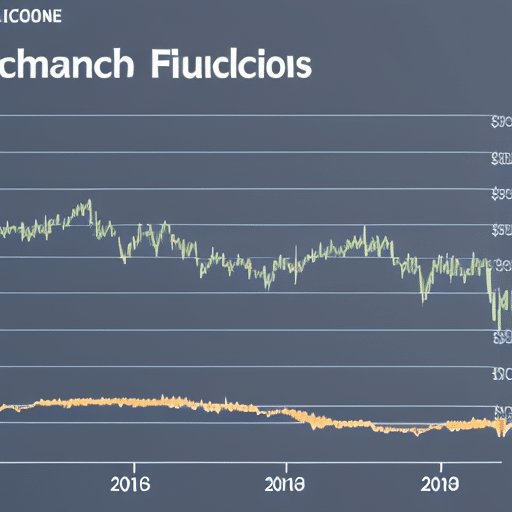Master Crypto Derivatives: Strategies for Success
Interested in exploring the world of cryptocurrency trading beyond buying and selling coins? Welcome to the realm of crypto derivatives trading. It’s a dynamic and fast-paced market where you can speculate on the price movements of digital assets without owning them. With the potential for higher returns, this form of trading offers a unique opportunity to diversify your investment portfolio in the ever-evolving crypto space.
In crypto derivatives trading, you can trade futures, options, and swaps based on the underlying value of cryptocurrencies. Whether you’re looking to hedge your risks or capitalize on market volatility, this financial instrument provides flexibility and leverage to enhance your trading strategies. Stay tuned as we delve deeper into the intricacies of crypto derivatives trading and uncover valuable insights to navigate this exciting landscape with confidence.
Understanding Crypto Derivatives Trading
When it comes to crypto derivatives trading, you’re delving into a realm that offers unique opportunities to enhance your trading strategies within the digital asset space. In this fast-paced environment, you can benefit from leveraging different types of derivatives based on the underlying value of cryptocurrencies.
Exploring Crypto Derivatives
- Futures Contracts: These allow you to speculate on the future price of cryptocurrencies without owning them. By entering into a futures contract, you’re essentially agreeing to buy or sell the digital asset at a predetermined price on a specified future date.
- Options Contracts: Options provide you with the right, but not the obligation, to buy or sell a cryptocurrency at a predetermined price within a set time frame. This flexibility can help you manage risk more effectively in volatile markets.
- Perpetual Swaps: Perpetual swaps are similar to futures contracts but with no expiry date. They enable you to trade an underlying cryptocurrency with leverage, offering potential for higher returns but also increased risk.
- Enhanced Flexibility: By trading derivatives, you can adapt your strategies to different market conditions and potentially profit from both rising and falling cryptocurrency prices.
- Leverage: Derivatives trading allows you to amplify your exposure to the crypto market with a smaller initial investment. While leverage can magnify gains, it also increases the level of risk.
- Portfolio Diversification: Including derivatives in your investment portfolio can help diversify your holdings beyond simply owning cryptocurrencies directly, potentially reducing overall risk.
In the ever-evolving landscape of crypto assets, understanding derivatives trading can be a valuable tool in your investment toolbox. Whether you’re looking to hedge against price fluctuations or capitalize on market opportunities, exploring crypto derivatives trading can offer a unique way to engage with digital assets.
Types of Crypto Derivatives

When it comes to crypto derivatives trading, you’ll encounter various types of financial instruments that allow you to speculate on digital asset prices without owning the underlying assets outright. Understanding the distinctions between these derivatives is crucial for effectively navigating the crypto market. Here are the key types of crypto derivatives you should be aware of:
1. Futures Contracts
Crypto futures contracts are agreements to buy or sell a cryptocurrency at a predetermined price at a specified time in the future. By trading futures contracts, you’re essentially betting on the future price movement of the underlying cryptocurrency. These contracts offer the advantage of allowing you to speculate on price movements without needing to own the actual crypto asset.
2. Options Contracts
Options contracts provide you with the right, but not the obligation, to buy or sell a cryptocurrency at a predetermined price within a specified time frame. In the world of crypto derivatives, options give you the flexibility to capitalize on price movements while limiting potential losses. You can choose to either exercise the option or let it expire, depending on market conditions.
3. Perpetual Swaps
Perpetual swaps are a type of derivative product that closely resembles traditional futures contracts but with some key differences. Unlike futures contracts that have set expiration dates, perpetual swaps have no expiry date, making them ideal for longer-term trading strategies. Additionally, perpetual swaps don’t require the actual delivery of the underlying asset, making them popular for leveraged trading in the crypto market.
By familiarizing yourself with the different types of crypto derivatives available, you can develop a strategic approach to trading that aligns with your risk tolerance and investment goals. Each type of derivative offers unique benefits and considerations, so it’s essential to conduct thorough research and understand how these instruments function in the context of crypto asset management.
Advantages of Crypto Derivatives Trading
When it comes to Crypto Derivatives Trading, there are several advantages that you should be aware of. Understanding these benefits can help you make informed decisions in navigating the crypto market effectively.
1. Enhanced Portfolio Diversification
Engaging in Crypto Derivatives Trading allows you to diversify your investment portfolio beyond simply holding cryptocurrencies. By using derivatives such as futures contracts, options contracts, and perpetual swaps, you can hedge risks and spread your investments across different assets. This diversification strategy can potentially reduce overall portfolio risk while maximizing returns.
2. Potential for Higher Returns
One key advantage of Crypto Derivatives Trading is the potential for amplified returns compared to traditional spot trading. Leveraging derivatives enables traders to take advantage of price movements in the cryptocurrency market without owning the underlying assets outright. Through leverage, you can magnify your profits when the market moves in your favor, increasing the potential for higher returns on your investment.
3. Risk Management and Hedging Opportunities
Derivatives play a crucial role in risk management within the crypto space. Crypto Derivatives Trading offers various hedging strategies that can help mitigate potential losses due to market volatility. For instance, futures contracts can be used to protect against adverse price movements by locking in prices for future transactions. Options contracts provide flexibility in managing risk by allowing traders to limit downside exposure while maintaining the opportunity for gains.
4. Increased Market Efficiency
By introducing sophisticated trading instruments like derivatives, the cryptocurrency market becomes more efficient. Crypto Derivatives Trading fosters price discovery and market liquidity, facilitating smoother price movements and reducing market inefficiencies. Traders can capitalize on arbitrage opportunities and improve overall market transparency through the use of derivatives, contributing to a more robust and mature market ecosystem.
5. Flexibility and Versatility in Trading Strategies
Crypto derivatives offer a wide range of trading strategies that cater to different risk appetites and investment objectives. Whether you prefer scalping, day trading, swing trading, or long-term investing, derivatives provide the flexibility to execute various trading styles. With the ability to go long or short on assets, employ leverage, and customize risk management techniques, Crypto Derivatives Trading empowers you to tailor your strategies to suit your unique trading preferences.
Risks Associated with Crypto Derivatives Trading
When engaging in crypto derivatives trading, it’s essential to be aware of the potential risks involved. Here are some key risks you should consider before participating in this market:
1. Volatility Risk
Cryptocurrency prices are known for their extreme volatility, and this volatility extends to the derivatives market. Prices can fluctuate rapidly, leading to significant gains or losses in a short period. You should be prepared for sudden price movements that could impact your positions.
2. Leverage Risk
One of the advantages of derivatives trading is the ability to trade on margin, allowing you to control a larger position with a smaller amount of capital. While this can amplify your profits, it also magnifies your losses. Using leverage increases your risk exposure, so it’s crucial to manage your positions carefully.
3. Counterparty Risk
In derivatives trading, you are exposed to counterparty risk, which is the risk that the other party in the trade may default on their obligations. This risk is higher in decentralized exchanges and unregulated platforms. Choosing reputable and well-established exchanges can help mitigate this risk.
4. Regulation and Legal Risks
The cryptocurrency derivatives market is still evolving, and regulatory environments vary across jurisdictions. Changes in regulations or government interventions can impact the market and your trading activities. Ensure you understand the legal implications of trading derivatives in your region.
5. Market Manipulation
Cryptocurrency markets, including derivatives markets, are susceptible to manipulation due to their relatively small size compared to traditional financial markets. Manipulative practices such as spoofing and wash trading can distort prices and affect your trading outcomes. Stay vigilant and be cautious of unusual market behavior.
6. Technology Risks
Trading on online platforms exposes you to technology risks such as system failures, hacks, or cyber attacks. Safeguarding your accounts with strong security measures, using reputable exchanges, and keeping your private keys secure are essential steps to protect your assets from technological vulnerabilities.
By understanding and actively managing these risks, you can approach crypto derivatives trading with a clear awareness of the challenges involved. Stay informed, exercise caution, and consider seeking advice from financial professionals to navigate the complexities of this dynamic market effectively.
Best Practices for Crypto Derivatives Trading
When engaging in Crypto Derivatives Trading, there are several best practices that you should follow to navigate the market successfully and minimize risks while maximizing potential returns. Here are some key strategies to consider:
Establish Clear Objectives
- Define Your Goals: Before entering into any derivatives trade, clearly outline your objectives, whether it’s hedging against price volatility, speculating on price movements, or diversifying your portfolio.
Conduct Thorough Research
- Understand the Market: Stay informed about the latest developments, market trends, and regulatory changes in the cryptocurrency space. Conduct in-depth research on the derivatives products you intend to trade to make well-informed decisions.
Practice Risk Management
- Set Stop-Loss Orders: Implement stop-loss orders to limit potential losses and protect your capital from significant downturns in the market.
- Avoid Overleveraging: Be cautious when using leverage as it can amplify both gains and losses. Only trade with leverage amounts that you can afford to lose.
Choose the Right Platform
- Select a Reputable Exchange: Use established platforms with robust security measures and a proven track record in handling derivatives trading.
- Verify Counterparties: Ensure the credibility and reliability of counterparties to minimize the risk of default.
Monitor Your Positions
- Regularly Review Your Trades: Keep a close eye on your open positions, monitor market movements, and be prepared to adjust your strategy accordingly.
- Stay Updated: Continuously assess market conditions, news, and technical indicators that may impact your trading decisions.
- Stay Educated: Cryptocurrency markets are dynamic and ever-changing. Stay updated on new trends, trading strategies, and risk management techniques to adapt to market conditions.
- Learn from Mistakes: Analyze past trades, identify areas for improvement, and learn from both successful and unsuccessful trading experiences.
By incorporating these best practices into your Crypto Derivatives Trading strategy, you can enhance your trading experience, mitigate risks, and improve your chances for success in the cryptocurrency derivatives market.
Conclusion
You now have a solid understanding of crypto derivatives trading, its benefits, risks, and best practices. By setting clear objectives, conducting thorough research, practicing risk management, choosing the right platform, monitoring positions, staying educated, and learning from past experiences, you can navigate the market effectively. Remember, success in crypto derivatives trading requires a strategic approach and continuous learning. Stay focused, stay informed, and adapt to market changes to enhance your trading outcomes. Happy trading!
Frequently Asked Questions
What is cryptocurrency derivatives trading?
Cryptocurrency derivatives trading involves trading financial instruments whose value is based on the price of cryptocurrencies like Bitcoin or Ethereum, rather than owning the actual cryptocurrencies.
What are the benefits of cryptocurrency derivatives trading?
Cryptocurrency derivatives trading offers benefits such as portfolio diversification, risk management, potential for profit in both rising and falling markets, and the ability to trade without owning the underlying asset.
What are the risks associated with cryptocurrency derivatives trading?
Risks in cryptocurrency derivatives trading include market volatility, high leverage leading to increased losses, regulatory uncertainties, exchange hacks, and the risk of liquidation from margin calls.
What are some best practices for successful crypto derivatives trading?
Best practices for successful crypto derivatives trading include setting clear objectives, conducting thorough research, practicing risk management, choosing the right trading platform, monitoring positions regularly, staying informed about market trends, and learning from past trading experiences.






